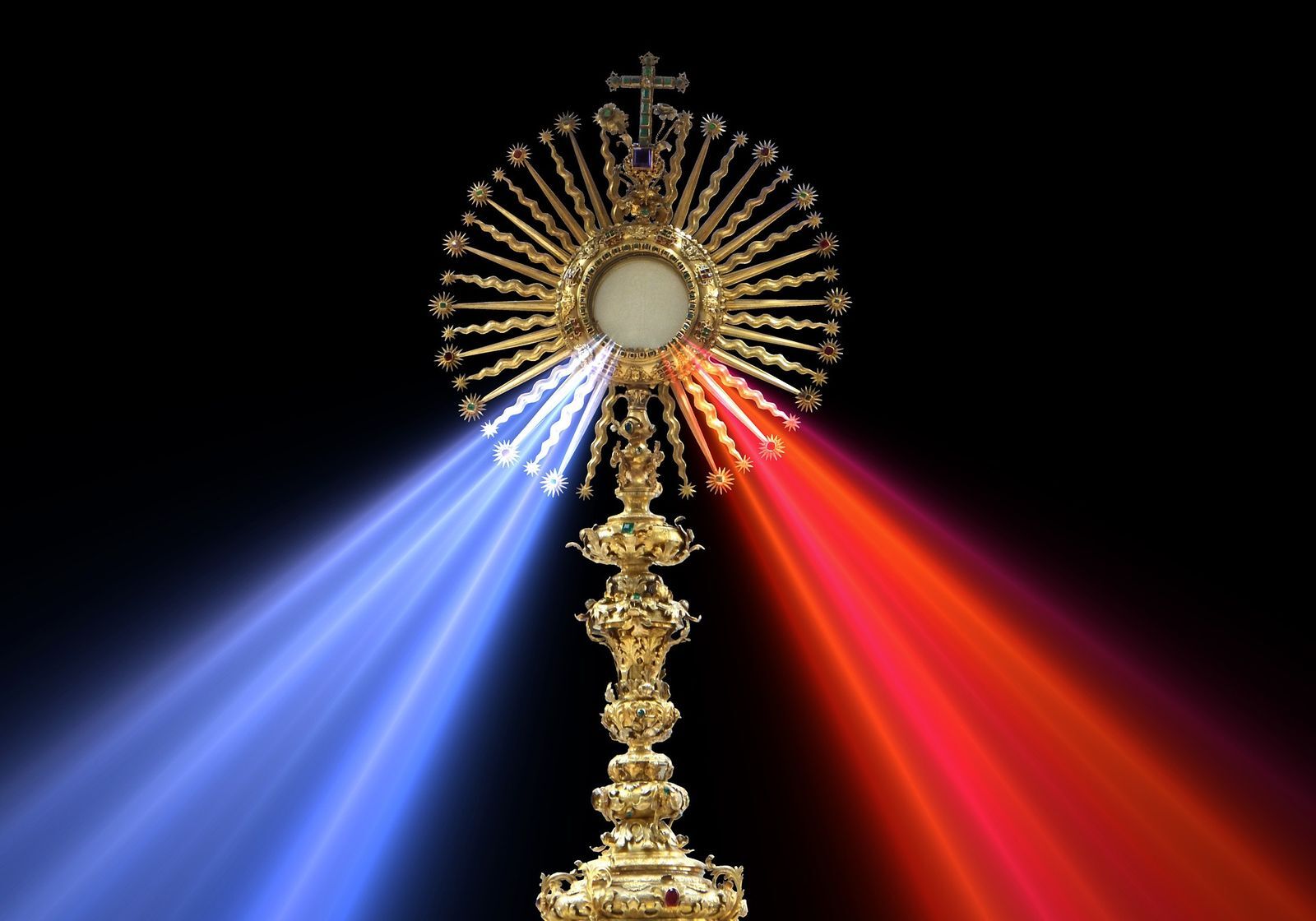
Eucharistic Adoration is a practice in the Catholic Church where believers spend time in prayer and reflection before the consecrated Eucharist. But what exactly is Eucharistic Adoration? It involves placing the consecrated host, believed to be the body of Christ, in a special vessel called a monstrance. This allows the faithful to pray and meditate in the presence of Jesus. Many find this practice deeply spiritual and calming. Some churches offer perpetual adoration, meaning the Eucharist is exposed 24/7, allowing worshippers to visit anytime. Whether you're a devout Catholic or just curious, these 30 facts will shed light on this revered tradition.
What is Eucharistic Adoration?
Eucharistic Adoration is a practice in the Catholic Church where the Holy Eucharist is displayed for worship. This tradition allows believers to spend time in the presence of the consecrated host, deepening their faith and devotion.
- Eucharistic Adoration involves the exposition of the Blessed Sacrament, typically in a monstrance, for worship and prayer.
- The practice dates back to the early centuries of Christianity, with roots in the belief of the real presence of Christ in the Eucharist.
- Adoration can be done individually or in groups, often in a chapel or church specifically designated for this purpose.
- The term "Eucharist" comes from the Greek word "eucharistia," meaning thanksgiving.
- Eucharistic Adoration is considered a form of prayer, where the faithful meditate and reflect in the presence of Christ.
Historical Significance
Understanding the history of Eucharistic Adoration helps appreciate its importance in the Catholic faith. This practice has evolved over centuries, reflecting the deepening understanding of the Eucharist.
- The practice became more formalized in the 11th century, particularly in response to debates about the real presence of Christ in the Eucharist.
- Corpus Christi feast, established in the 13th century, played a significant role in promoting Eucharistic Adoration.
- St. Francis of Assisi and his followers were instrumental in spreading the practice of Eucharistic Adoration.
- The Council of Trent (1545-1563) reaffirmed the importance of Eucharistic Adoration in response to Protestant Reformation challenges.
- Perpetual Adoration, where the Eucharist is exposed 24 hours a day, began in the 16th century.
Spiritual Benefits
Eucharistic Adoration offers numerous spiritual benefits, helping believers grow closer to God. This practice provides a unique opportunity for reflection, prayer, and spiritual growth.
- Adoration fosters a deeper personal relationship with Jesus Christ.
- It provides a quiet space for contemplation and prayer, away from the distractions of daily life.
- Eucharistic Adoration can lead to a greater sense of peace and spiritual well-being.
- Many believers report experiencing a profound sense of God's presence during Adoration.
- Adoration encourages a deeper understanding and appreciation of the Eucharist.
Practices and Traditions
Various practices and traditions have developed around Eucharistic Adoration, enriching the experience for believers. These customs vary by region and community but share a common goal of honoring the Eucharist.
- Holy Hours are specific times set aside for Eucharistic Adoration, often including prayers, hymns, and readings.
- Benediction is a special service where the priest blesses the congregation with the Blessed Sacrament.
- Eucharistic Processions involve carrying the Blessed Sacrament through the streets, often during the feast of Corpus Christi.
- Adoration Chapels are dedicated spaces for perpetual or regular Adoration.
- Eucharistic Congresses are large gatherings of Catholics focused on celebrating and promoting the Eucharist.
Modern-Day Adoration
Eucharistic Adoration continues to thrive in modern times, adapting to contemporary needs while maintaining its core traditions. This practice remains a vital part of Catholic spirituality.
- Many parishes offer Adoration as part of their regular schedule, often on specific days or times.
- Online Adoration has become popular, allowing believers to participate virtually.
- Youth groups and young adult ministries often incorporate Adoration into their activities.
- Retreats and spiritual conferences frequently include opportunities for Eucharistic Adoration.
- Pope John Paul II and other recent popes have strongly encouraged the practice of Eucharistic Adoration.
Global Impact
Eucharistic Adoration has a significant impact worldwide, uniting Catholics in their devotion to the Eucharist. This practice transcends cultural and geographical boundaries, reflecting the universal nature of the Catholic Church.
- Eucharistic Adoration is practiced in virtually every country where the Catholic Church is present.
- Missionaries often introduce Adoration to new communities as part of their evangelization efforts.
- International Eucharistic Congresses bring together Catholics from around the world to celebrate the Eucharist.
- Adoration is a common practice in religious orders, particularly those dedicated to contemplative life.
- Eucharistic Adoration has inspired countless saints and spiritual leaders throughout history.
The Heart of Eucharistic Adoration
Eucharistic Adoration offers a unique chance to deepen one's faith. Spending time in the presence of the Blessed Sacrament can bring peace, clarity, and a stronger connection to God. It's a practice that has touched countless lives, providing a quiet space for reflection and prayer.
Whether you're a lifelong believer or just curious, Eucharistic Adoration invites everyone to experience its profound impact. The simple act of sitting in silence before the Eucharist can be transformative. It’s a reminder of the divine love that’s always present, waiting to be embraced.
So, next time you seek solace or spiritual growth, consider Eucharistic Adoration. It might just be the peaceful retreat you need in a busy world. Give it a try and see how it can enrich your spiritual journey.
Was this page helpful?
Our commitment to delivering trustworthy and engaging content is at the heart of what we do. Each fact on our site is contributed by real users like you, bringing a wealth of diverse insights and information. To ensure the highest standards of accuracy and reliability, our dedicated editors meticulously review each submission. This process guarantees that the facts we share are not only fascinating but also credible. Trust in our commitment to quality and authenticity as you explore and learn with us.


